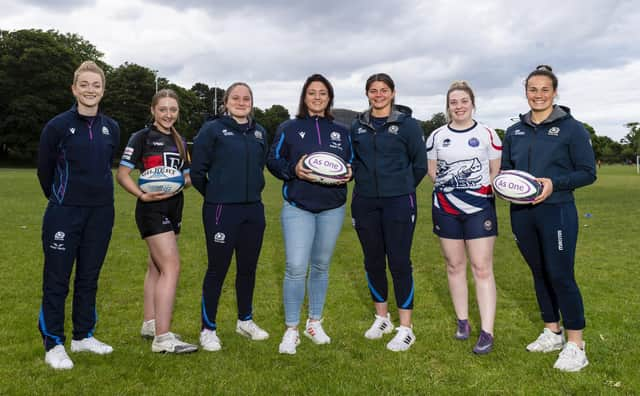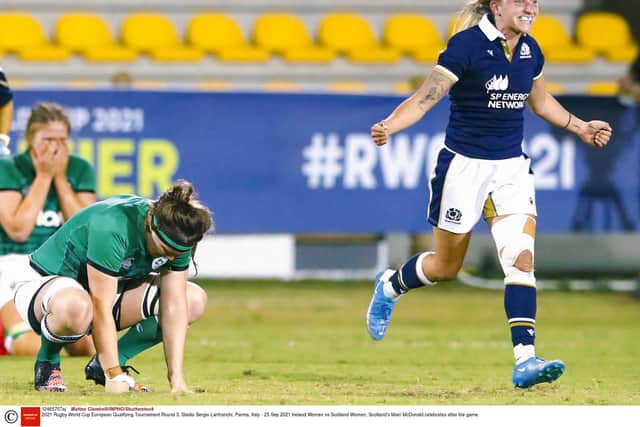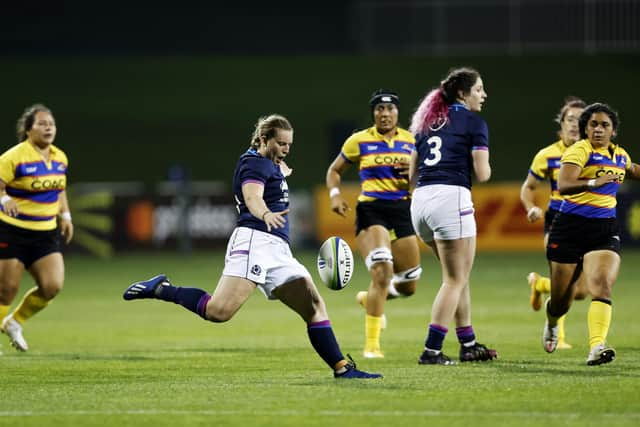Scottish rugby looks to seize the moment in female sport’s changing landscape


The decision to award full-time contracts to a minimum of 30 players and the creation of two semi-pro teams are the standout features of Scottish Rugby’s new Women & Girls’ Strategy, published on Thursday, but the overall aim is to “develop and grow the game at every level over the next four years”.
With Scotland having qualified for the World Cup for the first time in 12 years, this is an attempt to seize the moment and “create long lasting, transformational change”.
Advertisement
Hide AdAdvertisement
Hide AdThe rise and rise of women’s sport has been fuelled by social media, giving it a voice when previously it was often ignored or marginalised.
The results have been startling. Earlier this year more than 90,000 turned up at the Nou Camp to watch Barcelona beat Real Madrid, the highest attended female club football game in history.
The figures around Scottish rugby are more modest but encouraging nonetheless. A record attendance of 3,988 saw Scotland’s Women’s Six Nations opener against England in Edinburgh in March. More than 450,000 watched the match on TV, and 1.3 million tuned in for Scotland’s other home game in the championship, against France in April. Participation numbers are also rising, from 4,873 before Covid to 6,173 post pandemic.
The SRU wants to build on this and is prepared to back it financially. An additional £2.5 million is being pumped into women’s rugby to cover the first year of the new strategy, taking women and girls’ funding to £4.1m.
“It is investment from the Scottish Rugby Board,” said Fay. “We’re buying into the potential of the sport, what we have in Scotland and what we can do in the future. This strategy is essentially about putting those building blocks in place that allows us to do that.”


Fay’s experience in elite sport is long. She was goalkeeper for the Scotland football team for nearly two decades, winning a record 203 caps. She now feels women’s sport is on the cusp of a breakthrough moment.
“There is a change in the landscape of female sport in general. I have seen the false dawns that have been promised in women’s sport and the one thing that was always the common denominator was that society wasn’t ready for it. That has changed and it has changed quite significantly and quite quickly.
“We have a society that is demanding more of women’s sport. There is an appetite, from fans and businesses, to consume and invest in women’s sport.”


Advertisement
Hide AdAdvertisement
Hide AdFay credits the transformative work of the Football Association in England in putting its female international players on full-time contracts and creating the Women’s Super League. And she says social media is key to its growth.
“In the age of social media movements can be started overnight, and the ones that really strike a chord with people in society stick. And I think women’s sport, because of the quality of what we can see on TV, has stuck.
“The fact that governing bodies have opened up and said there’s an entire 50 per cent of the population there that we know are good for our sport if they come in - that’s why I think it’s a bit different. And the media are engaging in it more. We see more of it on TV, we hear more about it. People are enthused about it.”
The national team is the most visible part of women’s rugby in Scotland and is key to inspiring future generations. Part of the investment will be used to set up three regional academies and the creation of two semi-pro teams will help drive up standards.
Where they will play is being kept under wraps but England’s Premier 15s is one possibility and there has also been talk around a female United Rugby Championship.
The immediate future is performing at the 12-team World Cup in New Zealand in October where a top-nine finish has been targeted.
With the SRU committed to offering players salaries that are competitive enough for them to drop their day jobs, improvement will be expected and the aim is a top four finish in Six Nations by 2024, and the top eight at the 2025 World Cup.
“We want to harness the current momentum we have seen post-pandemic in the women’s game and create long lasting, transformational change, allowing women and girl’s rugby to define its own unique identity within the rugby landscape in Scotland,” said Fay.
Comments
Want to join the conversation? Please or to comment on this article.

